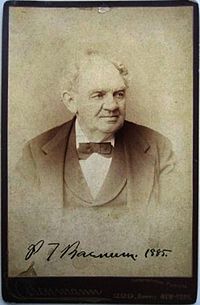Opening song:
If there’s a question bothering your brain That you think you know how to explain You need a test Yeah, think up a test
If it’s possible to prove it wrong You’re going to want to know before too long You’ll need a test
If somebody says they figured it out And they’re leaving any room for doubt Come up with a test Yeah, you need a test
Are you sure that that thing is true? Or did someone just tell it to you? Come up with a test
Test it out
Find a way to show what would happen If you were incorrect (Test it out)
A fact is just a fantasy Unless it can be checked Make a test Test it out
If you want to know if it’s the truth Then, my friend, you are going to need proof Come up with a test Yeah, you need a test
Don’t believe it ’cause they say it’s so If it’s not true, you have a right to know Put it to the test (put it to the test) Yeah, test it out (put it to the test) Yeah, put it to the test (put it to the test) Put it to the test (put it to the test)
Lesson 4:
Mistakes, errors and failures are how we learn. We must be willing to be wrong, but also identify when we are wrong and willing to correct our mistakes in order to move forward.
http://www.history.com/topics/thomas-edison/videos#thomas-edison Start at 0:58.
Edison had a vision and wanted to succeed, but he was willing to move through mistakes. In the movie “Meet The Robertsons,” failure is celebrated as long as one learns something:
http://www.youtube.com/watch?v=7p_eKV3SzwE
In most schools and work environments today, failure is something scary. It is something to be avoided and shunned. No one wants to be on a failing team. Something we need to realize out of this class is how important it is that we fail during practice time, learn, and turn that learning into forward progress.
Fallacies:
There are many ways that humans say things that sound logical, but they are failures, mistakes, and errors. We talked about them a bit during the last class:
http://www.youtube.com/watch?v=kgdDK4XMpm0
We must learn to recognize fallacies, identify them, and correct them if we are to make logical arguments.
ACTIVITY:
Identify what is flawed about these statements:
1. If it weren’t for the president’s environmental policy, we wouldn’t be dealing with these environmental catastrophes.
2. It’s disgraceful that a member of the Elks Lodge would go out to fast food restaurants every night. The Elks believe in family values, including home-cooked meals.
3. Sure, I’ve heard that its better to not eat cheeseburgers every day, but it’s extra protein and protein is good for you.
Fallacies for the day:
Ad Hominem– “Ad Hominem” means “against the man” or “against the person.”
In other words, attacking the man instead of the argument.
Example: Janie said George Washington was the first president, but she’s a blond. What does she know?
Straw man– The Straw man fallacy is committed when a person simply ignores a person’s actual position and substitutes a distorted, exaggerated, or misrepresented version of that position.
This sort of “reasoning” has the following pattern:
-
Person A has position X.
-
Person B presents position Y (which is a distorted version of X).
-
Person B attacks position Y.
-
Therefore X is false/incorrect/flawed.
This was shown in this example last time:
Bill and Jill are arguing about cleaning out their closets.
Jill: “We should clean out the closets. They are getting a bit messy.”
Bill: “Why, we just went through those closets last year. Do we have to clean them out everyday?”
Jill: “I never said anything about cleaning them out every day. You just want too keep all your junk forever, which is just ridiculous.”
Two wrongs make a right- Two Wrongs Make a Right is a fallacy in which a person “justifies” an action against a person by asserting that the person would do the same thing to him/her, when the action is not necessary to prevent B from doing X to A. This fallacy has the following pattern of “reasoning”:
It is claimed that person B would do X to person A.
It is acceptable for person A to do X to person B (when A’s doing X to B is not necessary to prevent B from doing X to A).
Examples:
Bill has borrowed Jane’s expensive pen, but found he didn’t return it. He tells himself that it is okay to keep it since she would have taken his.
After leaving a store, Jill notices that she has underpaid by $10. She decides not to return the money to the store because if she had overpaid, they would not have returned the money.
Homework:
Write 3 wrong statements. Intentionally making mistakes is not only fun, but it teaches our brains to look for those mistakes in the future.
Write one ad hominem argument.
Write one straw man argument.
Write one “two wrongs make a right” argument.
If they start to, let the children play out these fallacies with each other. They will probably giggle and laugh at how silly it is to make these mistakes intentionally. That’s absolutely fine.












